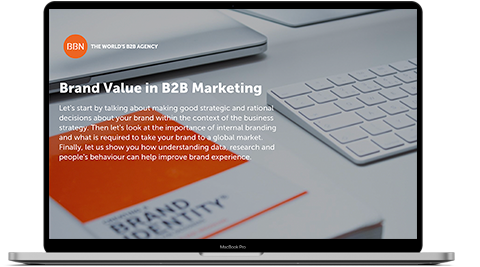Posted by BBN Central on 23rd Apr 2024
Quality Over Quantity: A Strategic Content Investment
Welcome to the fourth instalment in our series of seven articles, each dedicated to exploring smart investment strategies for fearless
READ MOREPosted by BBN Central on 12th Jun 2023
BALANCING GLOBAL MESSAGING CONSISTENCY AND LOCAL RELEVANCE
As more businesses expand globally to find growth opportunities, it becomes exceedingly challenging to succeed — especially given the pace of commerce and hard-to-predict changes which can impact international business. BBN, along with its global partners like TriComB2B, and its client experts, brings decades of global B2B focus. In this first, of a series of articles, on global B2B marketing, we look at how you can ensure your messages travel well.
As with most marketing challenges, there usually isn’t a single “best practice” to adopt and use. Instead, we’ve combined the advice of savvy global experts to provide you with a range of opinions and advice. We hope their insights will bring you inspiration and new perspectives on improving your global marketing efforts.
As a steward for a global brand, the average B2B marketer spends significant time and effort defining market positioning and messaging guidelines at all levels of the business: corporate, platform, product portfolio and more. And for good reason. Ensuring a unique, defendable market position is the foundational requirement upon which an engaging, high-performing global communications platform is built. Teams are dedicated to defining and managing messaging across the business and ensuring the brand message is consistently deployed.
But just as a successful global businessperson must adapt as they cross into different markets — exchanging currencies and adapting languages — your messaging needs to be adaptable to be effective.
Ample research shows B2B businesspeople in many parts of the world make decisions based on emotion. As a result, marketers work hard to inject personal value into their messaging to connect with decision-makers at a higher level. But think twice before applying this principle universally.
Shea Vincent, senior marketing director for BioLife Solutions, offered this perspective. “Many of the stereotypes about marketing to various geographies have held. The US is a market driven by emotion. Buyers want to connect with a brand personally. Many European and Asian countries are more fact-based and technically product-driven, at least initially. But all customers want to feel confident and assured they are making the right decisions. Tailoring a company value proposition to have an emotive connection to customer assurance, user success, and brand confidence has been very helpful.”
Deepak Sivanandan, head of global marketing for Flowserve, noted specific tendencies from customers in the Asia-Pacific region. “The evaluation of our offering is much more detailed in APAC. The sourcing teams have a lot of influence, and most come from technical backgrounds. The depth of technical detail we must provide to accommodate their methodical evaluations is more extensive than we see in Western cultures.”
Esther Oon-Bybjerg, group director of corporate communications for GAC Group, concurs. “In many Western markets, the communication trend is now ‘less is more’. But you cannot apply that philosophy universally. In Asia, it’s quite the opposite. We must adapt to these differences while being true to the brand.”
And while the differences between emotive and fact-based approaches are important to understand, there are other nuances marketers may not be aware of when it comes to execution. For example, Monica Arroyave, senior director of consumer solutions at Gilbarco Veeder-Root, shared that North American marketers must flip their story-telling approach. “Very few marketers realise that in Spanish-speaking cultures, you build the story gradually, starting with the details and culminating on your most important message. In English-speaking cultures, readers are more inclined to want the key message or takeaway first and then understand the details from there. Cultures express ideas differently. You must be careful to understand the nuances to be effective.”
Sometimes message relevancy comes down to evaluating a more basic set of criteria. It could be as simple as ensuring information is accurate and appropriate for your audience. Is the product you’re featuring available in the target market? Is your target persona the most relevant in that region? And what about industry regulations?
Sivanandan pointed out: “Considerations such as product availability or differences in model types or configurations must be accounted for. Providing generic information globally when your offering varies regionally puts the onus on the customer to figure things out. Your marketing resources should reflect these differences, and your customer-facing teams must be equipped accordingly.”
Two other basic marketing fundamentals are also critical: audience and competition. While it can be risky to generalise which audiences are most influential in targeted markets, there are some notable tendencies.
“We see big differences in the ‘care abouts’ by region. For example, in certain regions, we find that capital investment decisions are mostly driven by procurement. It is a price-dominated discussion,” noted Vijith Basheer, global marketing leader for valves, actuators and positioners for Flowserve. “In other regions, we see heavier influence from in-house and consulting engineers. As marketers, we must be able to support our sales channels effectively and be aware of how the customer decision journeys vary by audience influence.”
Thomas Heide Jorgenson, head of marketing communication at Danfoss, pays careful attention to audience nuances. “The go-to-market setup can vary significantly from geo to geo. In some markets, we sell directly to end customers, whereas in others, our go-to-market might be through OEMs or third-party representatives. We carefully tailor and optimise messages based on these differences.”
Regional adaptations can be even more complex, but many companies are willing to try to ensure maximum relevance. Mike Bell, vice president and chief creative officer at TriComB2B, shares his experience with a client who broke down messaging approaches by role and title and several other factors.
“In the Americas, our client’s technology was ideal for facilities larger than one million square feet. In the EU, their target facility was only 10 to 20 per cent of that size. Furthermore, factors such as pace of work, workforce stress and working conditions varied by geography, causing us to make even more granular messaging adaptations based on regional factors.”
External factors must also be accounted for to ensure maximum relevance. A one-size-fits-all approach to technical designations, certifications and approvals can mean a straight line to irrelevance with savvy buyers. The regulatory environment is one area that technical and industrial B2B companies must deal with. Complying with energy efficiency, environmental accessibility and other standards on a region-to-region, country-to-country basis is very complex and can affect which products are relevant.
Jorgenson says these types of factors are prevalent at Danfoss. “Local and national regulatory requirements can vary in our business. We diligently ensure communications are adapted and delivered accordingly to ensure relevancy.”
Arroyave pointed out: “For one product we developed, ergonomic features that helped customers comply with disability requirements were very important. In other countries, these attributes were non-factors. In another case, our ability to help customers achieve environmental compliance in the U.S. was paramount, whereas in other countries, this consideration was still a moving target. We have to be very careful to adapt materials accordingly and be ready to make changes as new standards emerge.”
So what does it take to ensure your marketing messages are relevant globally? Time, money and resources, of course. And the foresight to get the essential human resources involved from the outset. Adam Sidders, marketing communications director for Cummins, offered this advice.
“Be inclusive in terms of who you get involved — not just regionally but also from the point of view of true diversity. If your campaigns and programs express a homogenous, single idea of your worldview, you’re missing an opportunity.”
Sidders went on to share that he is lucky to work at a company that emphasises the value of incorporating diverse, inclusive points of view. So expressing diversity in marketing programs at Cummins is not only natural and the right thing to do but also an expectation everyone on his team is challenged to meet.
Another practice that will help is moving from reactive to proactive regarding obtaining feedback. Too often, marketing teams are insulated from customer interactions, leading to ineffective approaches conceived in a vacuum. Vincent commented, “Your marketing team needs to be active globally. Connect with global customers through your sales team and learn what works for them and what attracts them to brands. Build relationships with distributor leaders to find out what will help them. These customer-facing resources are full of useful insights that will make your marketing better.”
Ultimately, our client experts point to consistent advice for messaging your business across borders:
About the AuthorThis article was originally co-produced by U.S.-based BBN partner TriComB2B and Cross-Border Communications in a white paper published by TriComB2B titled ‘Top Considerations for Highly Effective B2B Global Marketing.’ TriComB2B is unabashedly devoted to industrial and technical B2B marketing, helping clients design optimised marketing strategies that drive decisions in complex, considered purchases. |
Posted by BBN Central on 12th Jun 2023
We've gathered thoughts and expertise from our top strategists to bring you this insightful publication in B2B marketing. Get our e-Book to understand how you can build brand value in your organisation.

1 email a month, EXCLUSIVE stories, and 10 minutes of your time.
Subscribe now
Posted by BBN Central on 23rd Apr 2024
Welcome to the fourth instalment in our series of seven articles, each dedicated to exploring smart investment strategies for fearless
READ MORE
Posted by BBN Central on 12th Apr 2024
Welcome to the third instalment, focusing on smart investment strategies for fearless marketers aiming to win market share in the
READ MORE
Posted by BBN Central on 5th Apr 2024
In B2B marketing, the compass that points businesses towards success is increasingly data-driven. Here at BBN, we've been keenly observing
READ MORE
Posted by BBN Central on 29th Mar 2024
Since the introduction of Sora, OpenAI's text-to-video model, the worlds of AI and marketing have been abuzz. It's being called
READ MORE